When Donald Trump took the stage in Cleveland to accept the 2016 Republican presidential nomination, he sounded different from the party’s traditional, business-friendly standard-bearers.
“I have visited the laid-off factory workers and the communities crushed by our horrible and unfair trade deals. These are the forgotten men and women of our country. People who work hard but no longer have a voice,” he declared. “I am your voice.”
The rhetorical flourish was the culmination of a campaign in which Trump took pleasure in shredding the tenets of the wealthy-first, trickle-down economics that have dominated the GOP since Ronald Reagan’s presidency.
Trump built his presidential run, first and foremost, on anti-immigrant demagoguery of the kind eschewed by his party’s Chamber of Commerce wing. But he also flouted long-standing conservative economic orthodoxies in ways that angered conservatives and inspired a mixture of ideological intrigue and political fear in some liberals.
He trashed free-trade agreements that have been the bane of the organized labor movement since the early 1990s, promising to shelve an existing accord and renegotiate others in an effort to revive domestic manufacturing. He vowed to defend Social Security, Medicare and Medicaid from any cuts; empower Medicare to negotiate bulk rates on prescription drugs; repeal the Affordable Care Act while providing universal coverage through other means; and pass an infrastructure bill twice the size of what his then-Democratic rival, Hillary Clinton, was proposing. He mocked the country’s pay-to-play campaign finance system and the low tax rate paid by the “paper pushers” who run hedge funds.
Some of the swing voters Trump needed to win apparently took notice. A lower percentage of voters viewed him as “conservative” than any of his immediate Republican predecessors in the White House.
“Trump became a real Republican at the very worst time ― a time when Republican orthodoxy could not be less wanted by the American people.”
- Saagar Enjeti, co-author, "The Populist's Guide to 2020"
As it turned out, the elements of Trump’s candidacy with the narrowest public appeal ― racism, mismanagement, vanity, inattention to policy detail ― came to fruition, while the heterodox policy stances and rhetoric that gave some on the populist left and right the faintest whiff of optimism fell by the wayside.
“During the campaign, his willingness to criticize a lot of neoliberal approaches was something I found very refreshing,” said Julius Krein, founder of the conservative magazine American Affairs and an early intellectual cheerleader for Trump who became an outspoken critic during the first year of his presidency. “As president, there has been a lot more conventional Republican, market fundamentalist policy.”
Within a year, voters had taken notice, characterizing him in polling as far more conservative than they’d thought when he was a candidate.
Trump can thank his inability or unwillingness to challenge traditional Republican ideology for his consistent polling deficit against Democratic nominee Joe Biden during this year’s election cycle, according to Saagar Enjeti, co-author of “The Populist’s Guide to 2020: A New Right and New Left Are Rising.”
Enjeti ― who, like Krein, identifies as a right-wing populist ― believes that pro-corporate, trickle-down economics has been an especially tough sell amid the destruction caused by the coronavirus pandemic and the economic recession that has come with it.
“Trump became a real Republican at the very worst time ― a time when Republican orthodoxy could not be less wanted by the American people,” Enjeti said. “That is why you see such devastation in terms of his public support ― even among people who supported him last time.”
The White House rejects the idea that Trump has failed to deliver on his campaign pledges to help ordinary people.
“President Trump has kept his 2016 promises to the American people and more, pushing ahead policies that put America first,” White House spokesperson Sarah Matthews said in a statement. “No President has accomplished more at this point in his first term than President Trump, including delivering on his promises to cut taxes, renegotiate fair trade deals, rebuild our military, unleash American energy like never before, lower drug costs, stand with our allies, build the wall, and confirm more conservative judges — including two Supreme Court justices and more than 200 judges to our federal courts.”
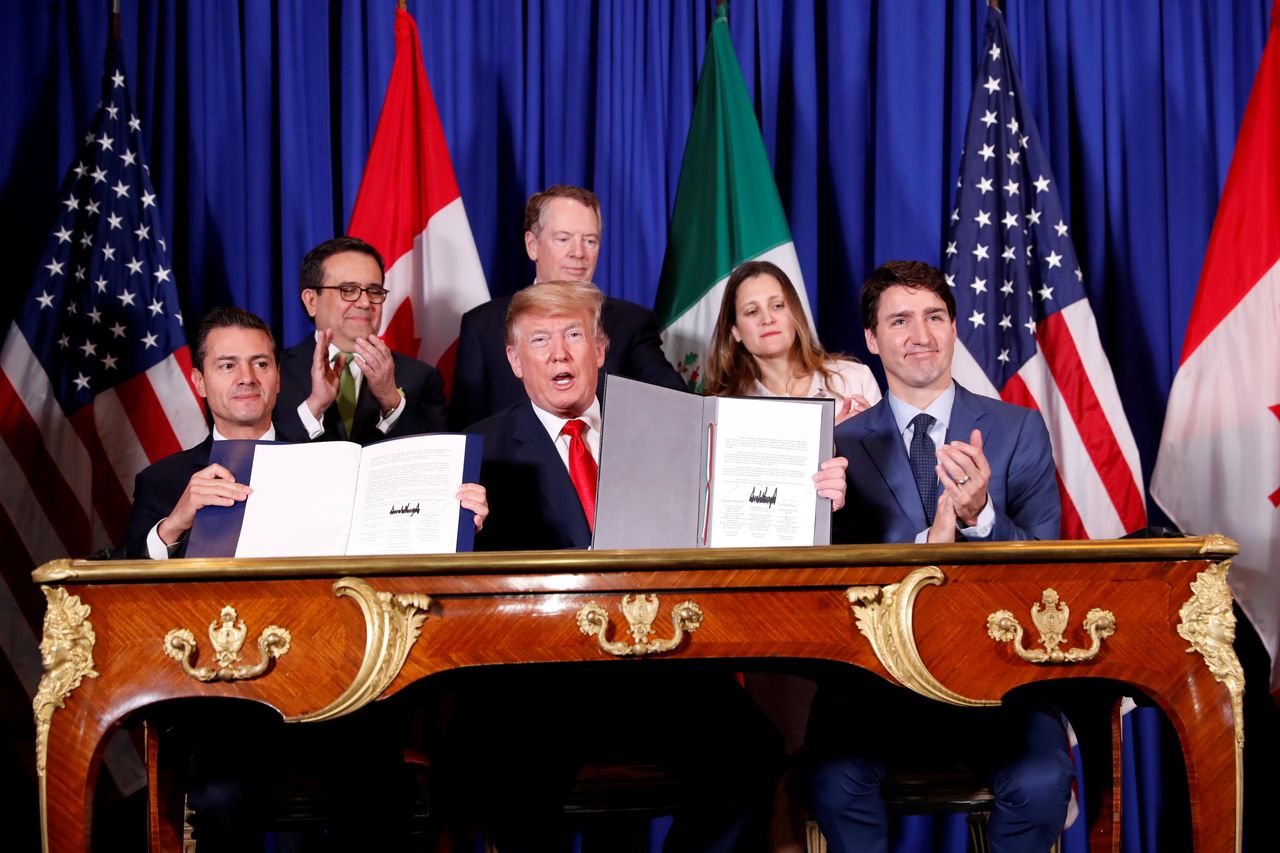
A New Paradigm On Trade — Without The Jobs To Match
Unlike other areas of economic policy where Trump jettisoned promises to break with Republican orthodoxy, he has pursued a more nationalistic approach to trade. He immediately withdrew the United States from the Trans-Pacific Partnership, a 12-nation trade agreement negotiated by former President Barack Obama over the objections of labor unions and a host of other liberal groups. Trump also stacked his administration with trade hawks such as Robert Lighthizer, Peter Navarro and Wilbur Ross.
And while Obama promised as a candidate to renegotiate the North American Free Trade Agreement only to ignore the matter as president, Trump actually reopened the accord in an effort to boost U.S. manufacturing. The modified agreement, the U.S.-Mexico-Canada Free Trade Agreement, won the endorsement of the AFL-CIO, the country’s largest federation of labor unions, and House Democrats, who voted to enact the deal in December.
But Trump didn’t just run his campaign on renegotiating trade agreements. He promised that his trade policies would actually revive the American manufacturing job market.
“I am the only candidate in this race who will bring our manufacturing jobs back,” he wrote in a March 2016 op-ed in USA Today.
By that standard, Trump’s presidency has been disappointing. During Trump’s first two years in office, manufacturing jobs grew in line with overall job growth in an economy still climbing its way out of the Great Recession. That rate was not noticeably higher than in the economic recovery years preceding Trump’s presidency.
Meanwhile, the country’s manufacturing capacity ― which determines how many manufacturing jobs the country can sustain ― continued to decline. The United States lost 1,800 factories in 2017 and 2018, according to data compiled by the Economic Policy Institute, a progressive think tank that receives some funding from labor unions. (EPI’s hawkish stances on trade and support for manufacturing policy has given its work bipartisan appeal: Trump cited the organization in his March 2016 op-ed.)
The lack of progress has been especially apparent in the Great Lakes region that helped deliver the presidency to Trump. Even as manufacturing jobs grew modestly in other parts of the country in 2019, employment from that sector declined by 0.5% in Pennsylvania, Ohio, Michigan and Wisconsin, according to a September report by the Century Foundation, a liberal think tank.
Part of the problem is that even the elements of Trump’s trade deals that liberals like ― such as boosting labor standards in Mexico ― are not enough to curb the appeal of offshoring to a country with cheaper labor and fewer regulations. To stop that offshoring, the United States needs to invest in economic and infrastructure development in Mexico to bring workers’ earning power much closer to parity with the U.S., according to Robert Scott, EPI’s director of trade and manufacturing research.
To level the playing field with countries such as China, the United States must also, among other things, devalue the dollar to make American exports more competitive in the global marketplace, Scott said. It’s an idea that has developed bipartisan traction in Congress, but one in which Trump has shown little interest.
Trump has even lost his touch for manufacturing-related publicity stunts of the kind that frightened Democratic operatives in the weeks after the 2016 election. His high-profile effort to save jobs at a Carrier air conditioning plant in Indianapolis, Indiana, was a stroke of political genius ― however disappointing its results ended up being.
“Trump had his pulse on something very real,” said Irene Lin, a Cleveland-based Democratic campaign consultant. “Rhetorically and politically, it was brilliant.”
It turned out to be a one-off, replaced by images of the idling of iconic factories like the General Motors plant in Lordstown, Ohio, a region where Trump told voters in July 2017 not to sell their homes because the lost manufacturing jobs were “all coming back.”
“I always knew he was going to be a fraud,” Lin said. “Four years later, that’s been proven.”
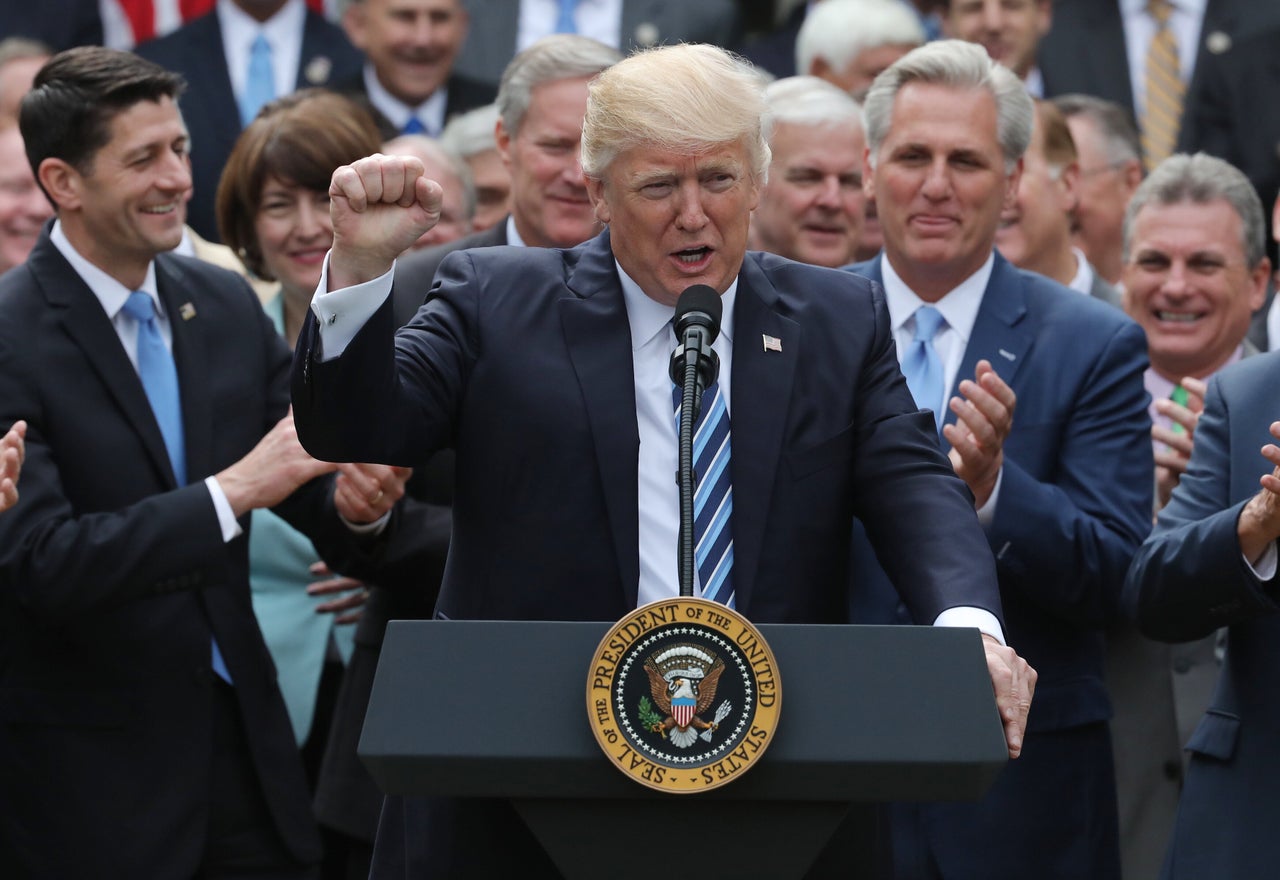
The ‘Paul Ryan Agenda’
Aside from trade, Trump’s policy priorities followed the typical Republican, trickle-down playbook: hostility toward government social programs, regulation of big business and taxes paid by wealthy people and corporations.
Michael Lind, a public policy professor at the University of Texas, Austin, has written sympathetically about the populist impulses behind Trump’s candidacy. He compared Trump to former President Richard Nixon, who likewise outsourced management of much of domestic policy to the reigning Republican establishment.
“The same way Nixon signed off on what was then the liberal domestic agenda, Trump signed off on the Paul Ryan agenda,” said Lind, author of “The New Class War.”
Enjeti blames Ryan, a Wisconsin Republican who served as House speaker for the first two years of the Trump presidency, and Senate Republican leader Mitch McConnell (Ky.) for hijacking Trump’s domestic agenda.
But he faults Trump for effectively letting them do it.
“He has never had a successful strategy for bending Congress to his will,” said Enjeti, who co-hosts “The Realignment,” a podcast about making the GOP a more working class-friendly party. “He didn’t care enough about policy.”
The two biggest legislative initiatives of Trump’s first term ― the attempted repeal of the Affordable Care Act and his massive tax cut bill ― exemplified this deference to the big-business libertarianism of Ryan and McConnell.
As a candidate, Trump promised to replace the Affordable Care Act, or Obamacare, with “something terrific” that provided universal coverage at a lower cost. And before his time in political life, he spoke glowingly about single-payer health care. But as president, he and his party have pursued policies designed to reduce coverage and shift costs onto patients.
The conventional GOP was far less wedded to universal coverage than Trump claimed to be. It sought to eliminate federal subsidies for moderate-income individuals to purchase coverage on the ACA’s insurance exchanges, defund the ACA’s successful expansion of Medicaid and undo protections for people with preexisting conditions ― all without the vaunted “replacement” that Trump had promised would be better than the original law. Even the slightly less hard-line bill that came up for a vote in the Republican Senate in July 2017 was projected to result in 16 million fewer Americans having health insurance. Among other contradictions, the bill’s Medicaid cuts violate Trump’s campaign promise that he would protect Social Security, Medicare and Medicaid from cuts (he has also repeatedly introduced budgets proposing cuts to Social Security disability benefits).
“He’s shown very little interest around serious policy discussion about health care.”
- Julius Krein, founder of American Affairs magazine
“He’s shown very little interest around serious policy discussion about health care,” Krein said.
In the end, Trump’s disinterest in challenging the Republican consensus on health care saddled him with all the political baggage of repeal and none of its supposed benefits. The opposition of three Republican senators tanked the repeal bill in the Senate, depriving him of a tangible accomplishment even as the negative publicity from his pursuit of repeal contributed to Republicans’ loss of the House in November 2018.
During the presidential debate with Biden on Sept. 29, Trump continued to insist that he had a plan to provide universal coverage, but he offered no evidence to support that claim.
When moderator Chris Wallace asked Trump whether, after four years of promises, he had a plan to provide universal coverage, he did not answer. Instead, he lied about protecting people with pre-existing conditions, when in fact he urged the passage of Republican bills in Congress that would have allowed insurers in some states to charge people more based on their medical history. And Trump’s Department of Justice has written a brief supporting yet another conservative lawsuit challenging the constitutionality of the entire ACA, including its safeguards for people with pre-existing conditions.
Trump’s tax bill, which did become law, similarly reflected the traditional Republican philosophy that the best way to boost the economy is to give the wealthiest people in the country more cash. He lowered the top corporate income tax rate from 35% to 21%, lowered the top income tax rate from 39% to 36%, and expanded the amount of household wealth exempt from the estate tax to $22 million per couple.
While Trump’s bill also lowered income taxes for the average middle-class family, his changes to income tax rates — unlike his changes to corporate tax rates — are due to expire at the end of 2025. And he eschewed proposals that would have made the tax code less tilted toward rich people, such as ending the loophole that allows corporations to defer taxes on profits amassed overseas, expanding the earned income tax credit for families with low incomes and taxing capital gains at the same rates as ordinary income.
Even a proposed border adjustment tax on foreign imports, an idea favored by trade hawks, ended up on the cutting room floor. And because Trump failed to crack down on the financial sector’s greediest practices, corporations used his mammoth tax cuts to engage in a record-breaking spree of stock buybacks instead of using their savings to boost worker pay or reinvest in their companies.
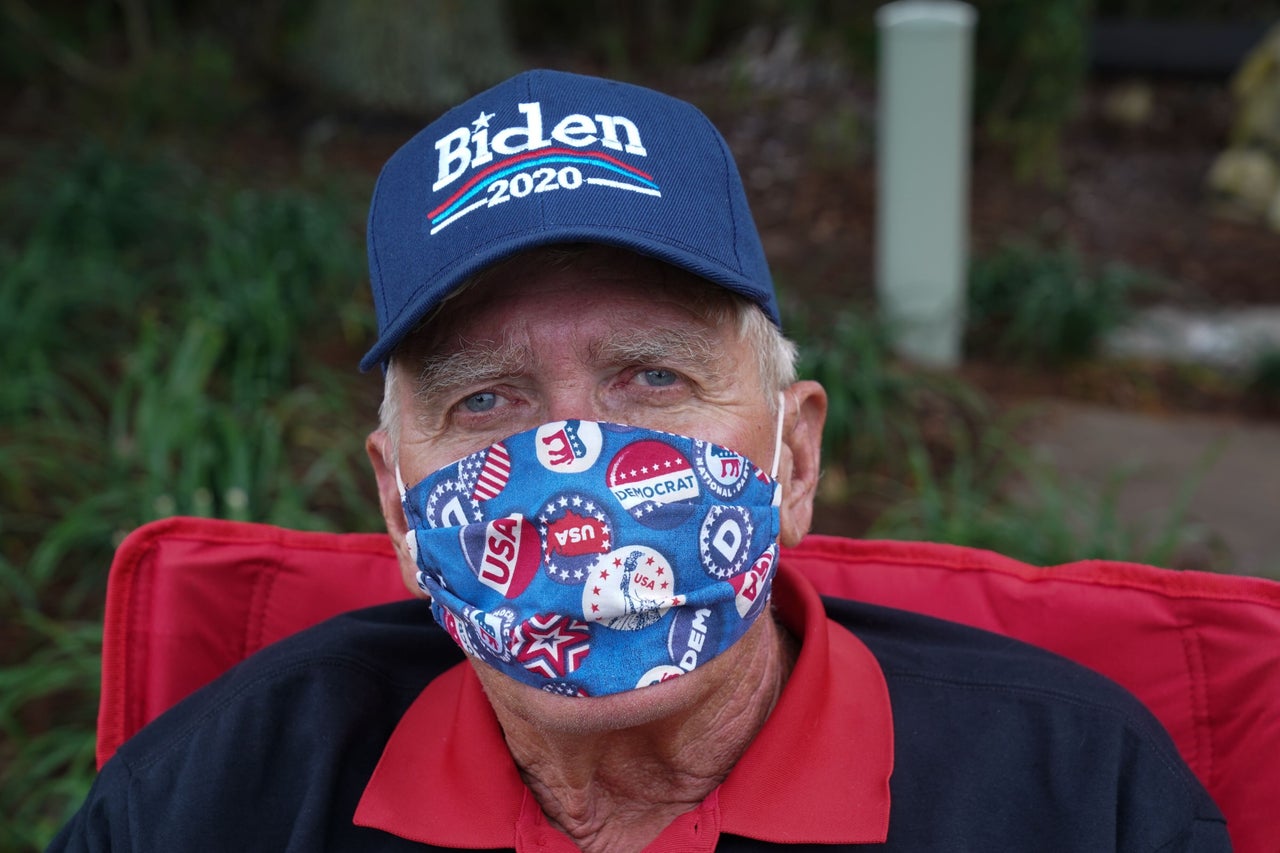
Meanwhile, Trump declined to take up a number of bipartisan priorities that he claimed, as a candidate, he would act on. His administration’s periodic rhetorical nods to infrastructure investment have become a Beltway punchline rather than a credible bill.
And contrary to his campaign promise that he would empower Medicare to negotiate bulk rates on drugs, Trump has mostly treated the issue of prescription drug prices as an afterthought. When House Democrats passed a bill in December that would empower the federal government to negotiate lower prices for up to 250 prescription drugs, the White House vowed that Trump would veto the bill.
In the meantime, Senate Republicans have yet to pass an alternative proposal. Trump did embrace a bipartisan Senate bill capping drug costs for Medicare beneficiaries, but the bill has stalled in the Senate and he has shown little interest in trying to revive it.
When Trump finally unveiled a series of executive orders aimed at lowering drug prices in July, health care experts panned the measures as relatively insignificant. For example, an order forcing pharmaceutical companies to give cash rebates to Medicare beneficiaries, rather than the middlemen who negotiate discounts, would likely just increase Medicare premiums and the federal government’s costs.
In September, Trump also announced a plan to send Medicare beneficiaries a $200 card to spend on prescription drugs with out-of-pocket costs. The cards have yet to be distributed because the administration is still working out logistics, such as how to cover the $7 billion price tag.
“He hasn’t been serious about really taking on pharma and providing relief to people with really high drug costs,” said Steve Knievel, an advocate in Public Citizen’s Access to Medicine program.

Economic Collapse
Prior to the pandemic, Trump’s biggest asset ― and the ultimate populist talking point ― was a roaring economy. As a candidate, Trump promised that Black Americans and “the Hispanics” would love him because of the jobs he created.
Most of the credit for the performance of the economy in Trump’s first term, however, should go to his predecessor, Barack Obama, who brought the economy back from the brink with a massive stimulus bill after the 2008 financial crisis. Obama went on to preside over 75 consecutive months of job growth, handing Trump an economy that was back on its feet and finally had developed enough momentum to soar.
“The reality is when you look at all the trends before he became president, we were in the middle of the longest period of continuous job growth,” said Bill Spriggs, chief economist at the AFL-CIO. “He continued to benefit from the tailwind.”
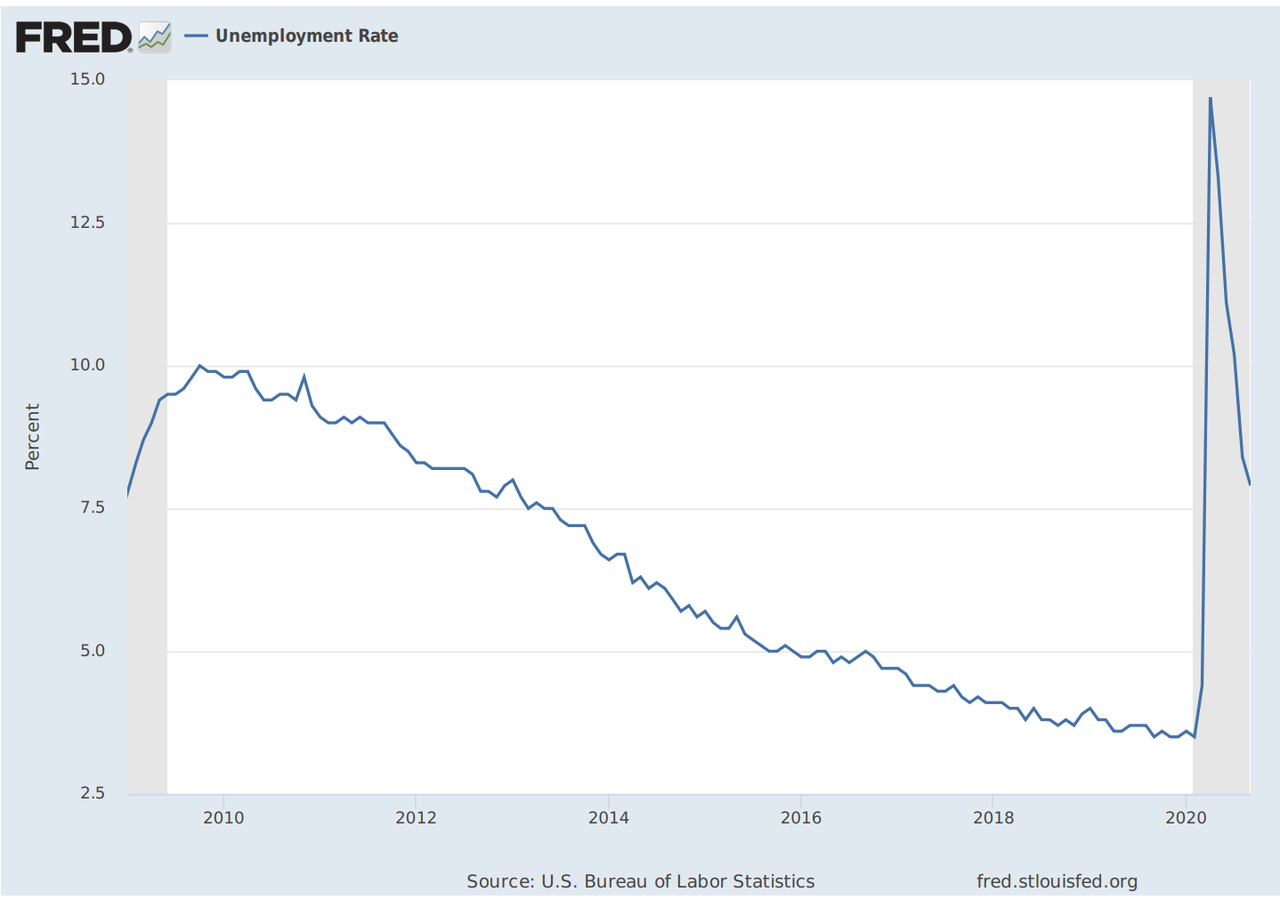
Trump also failed to ensure that ordinary workers would share in the economy’s gains by making it easier for workers to unionize, Spriggs said. He filled the National Labor Relations Board with pro-business, Republican appointees and curtailed federal government employees’ collective bargaining rights.
All of that pales in comparison, though, to the way that Trump mishandled the economic fallout from the pandemic, starting in March.
Under the Trump administration’s direction, Republicans in Congress prioritized bailing out massive corporations over helping small businesses and ordinary workers. The Paycheck Protection Program, which distributed loans to small businesses that were trying to keep workers on payroll, ended up being a bureaucratic nightmare. Had Trump followed the lead of many European nations, where governments covered businesses’ payrolls directly, the unemployment rate likely would not have skyrocketed to the degree that it did in the United States.
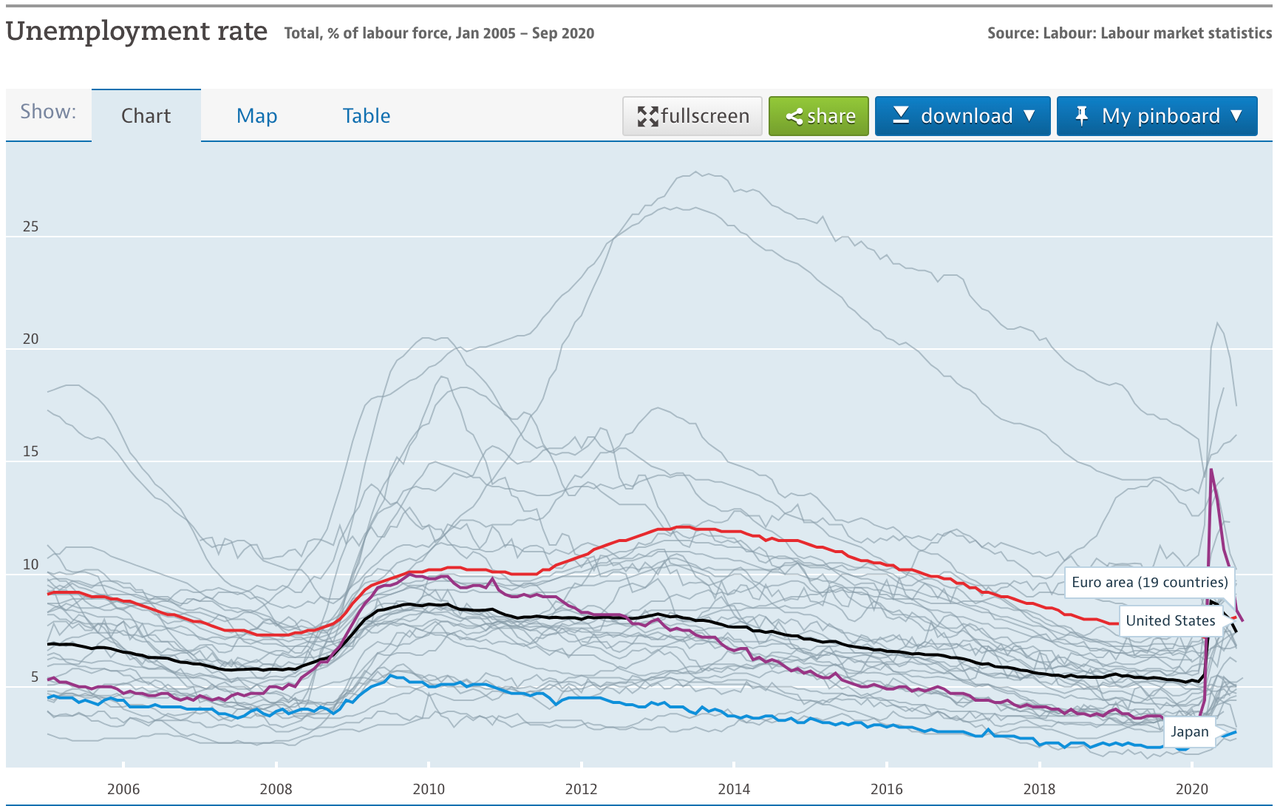
After several successive relief packages that have failed to prevent a long-term recession from taking hold even as businesses begin to reopen, Trump has still shown little interest in securing an additional bill that would, among other things, provide emergency aid to ailing state governments. He has delegated negotiations to Treasury Secretary Steve Mnuchin and has been more eager to lambaste states and cities run by Democrats than use his bully pulpit to encourage a bipartisan deal that could be one of his last chances at a second term.
Even as the president’s own diagnosis of COVID-19 plunged his reelection campaign into crisis on Oct. 2, Trump sent mixed signals about his desire for an agreement. He announced on Tuesday afternoon that he had “instructed” his negotiators to wait until after the election to resume talks about a coronavirus stimulus package.
By that evening, however, Trump appeared to change his mind. He began tweeting that he would sign individual bills that already have bipartisan support, even if a larger agreement proves elusive.
For left-leaning economists like Scott and Spriggs, the only silver lining of Trump’s presidency is that he has raised the political costs for business-friendly Democrats who are tempted to return to the party’s past support for pro-corporate policies, such as lopsided international trade agreements and excessive budgetary austerity.
“He has shifted the Democratic Party against doing more trade and investment deals,” Scott said.
Spriggs had a similar assessment, saying that although much of Trump’s appeal lies in pandering to voters with racist views, he has “forced Democrats to take restoring the middle class more seriously.”
We want to know what you’re hearing on the ground from the candidates. If you get any interesting ― or suspicious! ― campaign mailers, robocalls or hear anything else you think we should know about, email us at scoops@huffpost.com.
